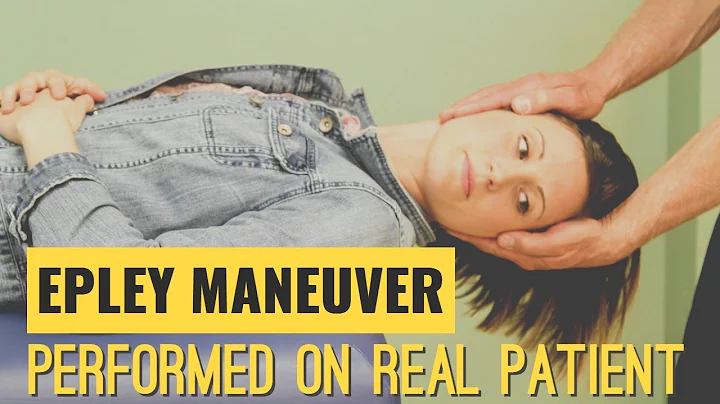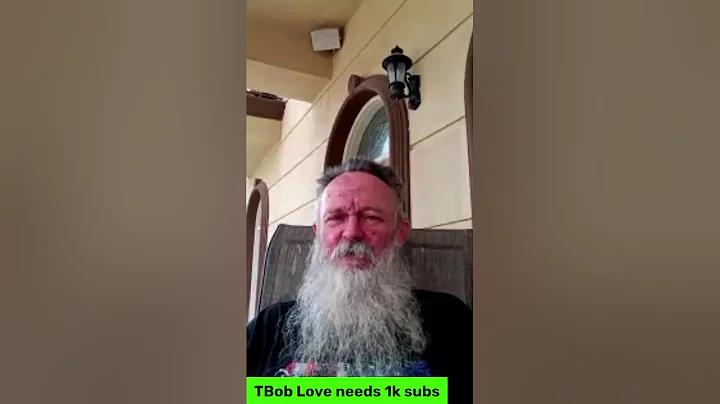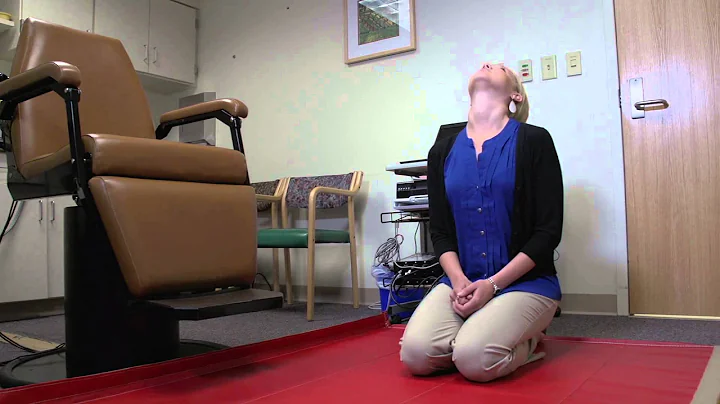Bob L Epling
age ~60
from Waynesville, OH
- Also known as:
-
- Bobby L Epling
Bob Epling Phones & Addresses
- Waynesville, OH
- Spring Valley, OH
- Beavercreek, OH
- Bellbrook, OH
- Cincinnati, OH
- Beavercreek Township, OH
- Warren, OH
- 6508 Revere Ave #1, Cincinnati, OH 45233 • (513)7066903
Work
-
Position:Machine Operators, Assemblers, and Inspectors Occupations
Education
-
Degree:Associate degree or higher
Us Patents
-
Switchable Polymer-Dispersed Liquid Crystal Optical Elements
view source -
US Patent:6867888, Mar 15, 2005
-
Filed:Dec 22, 2000
-
Appl. No.:09/742397
-
Inventors:Richard L. Sutherland - Dayton OH, US
Bill Hagan - Encinitas CA, US
William Kelly - Bridgeport CT, US
Bob Epling - Waynesville OH, US -
Assignee:Science Applications International Corporation - San Diego CA
-
International Classification:G02B005/32
-
US Classification:359 15, 359 3, 430 1, 430 2, 349201
-
Abstract:Transmission and reflection type holograms may be formed utilizing a novel polymer-dispersed liquid crystal (PDLC) material and its unique switching characteristics to form optical elements. Applications for these switchable holograms include communications switches and switchable transmission, and reflection red, green, and blue lenses. The PDLC material of the present invention offers all of the features of holographic photopolymers with the added advantage that the hologram can be switched on and off with the application of an electric field. The material is a mixture of a polymerizable monomer and liquid crystal, along with other ingredients, including a photoinitiator dye. Upon irradiation, the liquid crystal separates as a distinct phase of nanometer-size droplets aligned in periodic channels forming the hologram. The material is called a holographic polymer-dispersed liquid crystal (H-PDLC).
-
Switchable Polymer-Dispersed Liquid Crystal Optical Elements
view source -
US Patent:7068405, Jun 27, 2006
-
Filed:Dec 3, 2004
-
Appl. No.:11/002116
-
Inventors:Richard L. Sutherland - Dayton OH, US
Bill Hagan - Encinitas CA, US
William Kelly - Coronado CA, US
Bob Epling - Waynesville OH, US -
Assignee:Science Applications International Corporation - San Diego CA
-
International Classification:G03H 1/00
-
US Classification:359 34, 359 15, 430 2, 349201, 349183, 385 37
-
Abstract:Transmission and reflection type holograms may be formed utilizing a novel polymer-dispersed liquid crystal (PDLC) material and its unique switching characteristics to form optical elements. Applications for these switchable holograms include communications switches and switchable transmission, and reflection red, green, and blue lenses. The PDLC material of the present invention offers all of the features of holographic photopolymers with the added advantage that the hologram can be switched on and off with the application of an electric field. The material is a mixture of a polymerizable monomer and liquid crystal, along with other ingredients, including a photoinitiator dye. Upon irradiation, the liquid crystal separates as a distinct phase of nanometer-size droplets aligned in periodic channels forming the hologram. The material is called a holographic polymer-dispersed liquid crystal (H-PDLC).
-
Electrically Switchable Polymer-Dispersed Liquid Crystal Materials Including Switchable Optical Couplers And Reconfigurable Optical Interconnects
view source -
US Patent:7081215, Jul 25, 2006
-
Filed:Aug 12, 2004
-
Appl. No.:10/916430
-
Inventors:Lalgudi V. Natarajan - Beavercreek OH, US
Richard L. Sutherland - Dayton OH, US
Vince P. Tondiglia - Dayton OH, US
Timothy J. Bunning - Beavercreek OH, US
Bob Epling - Waynesville OH, US
Donna M. Brandelik - New Carlisle OH, US -
Assignee:Science Applications International Corporation - San Diego CA
-
International Classification:F21V 9/00
G02B 5/32
G02B 6/26
G02B 6/34
G02F 1/361 -
US Classification:252582, 349112, 359 15, 359569, 359576, 385 15, 385 37, 385 16, 385 27, 430 2
-
Abstract:A new photopolymerizable material allows single-step, fast recording of volume holograms with properties that can be electrically controlled. Polymer-dispersed liquid crystals (PDLCs) in accordance with the invention preferably comprise a homogeneous mixture of a nematic liquid crystal and a multifunctional pentaacrylate monomer in combination with photoinitiator, coinitiator and cross-linking agent. Optionally, a surfactant such as octancic acid may also be added. The PDLC material is exposed to coherent light to produce an interference pattern inside the material. Photopolymerization of the new PDLC material produces a hologram of clearly separated liquid crystal domains and cured polymer domains. Volume transmission gratings made with the new PDLC material can be electrically switched between nearly 100% diffraction efficiency and nearly 0% diffraction efficiency. By increasing the frequency of the switching voltage, switching voltages in the range of 50 Vrms can be achieved.
-
Electrically Switchable Polymer-Dispersed Liquid Crystal Materials Including Switchable Optical Couplers And Reconfigurable Optical Interconnects
view source -
US Patent:7198737, Apr 3, 2007
-
Filed:Jan 27, 2006
-
Appl. No.:11/340681
-
Inventors:Lalgudi V. Natarajan - Beavercreek OH, US
Richard L. Sutherland - Dayton OH, US
Vince P. Tondiglia - Dayton OH, US
Timothy J. Bunning - Beavercreek OH, US
Bob Epling - Waynesville OH, US
Donna M. Brandelik - New Carlisle OH, US -
Assignee:Science Applications International Corporation - San Diego CA
-
International Classification:F21V 9/00
G02F 1/133
G02B 5/18
G02B 6/34 -
US Classification:252582, 430 20, 349201, 349202, 359320, 359321, 359566, 359569, 385 36, 385 37
-
Abstract:A new photopolymerizable material allows single-step, fast recording of volume holograms with properties that can be electrically controlled. A method for preparing a switchable grating can comprise the steps of placing a mixture between a first and second slide, wherein the mixture has a photopolymerizable monomer, a second phase material, a photoinitiator dye, and a chain extender or cross-linker. The mixture is exposed to a laser and optical intensity pattern is applied to induce photopolymerization. A method for recording slanted reflection gratings can comprise the steps of placing a sample between a first and second glass prism, the sample comprising a polymerizable monomer, a liquid crystal, a chain-extending monomer, a coinitiator, and a photoinitiator. An incident light is split into two beams, wherein the beams enter the sample from opposite sides. The first and second prism are rotated to adjust the slant of the grating.
-
Switchable Polymer-Dispersed Liquid Crystal Optical Elements
view source -
US Patent:7256915, Aug 14, 2007
-
Filed:Nov 8, 2005
-
Appl. No.:11/268661
-
Inventors:Richard L. Sutherland - Dayton OH, US
Bill Hagan - Encinitas CA, US
William Kelly - Bridgeport CT, US
Bob Epling - Waynesville OH, US -
Assignee:Science Applications International Corporation - San Diego CA
-
International Classification:G03H 1/00
-
US Classification:359 34, 359 3, 430 1, 430 2, 349202
-
Abstract:Transmission and reflection type holograms may be formed utilizing a novel polymer-dispersed liquid crystal (PDLC) material and its unique switching characteristics to form optical elements. Applications for these switchable holograms include communications switches and switchable transmission, and reflection red, green, and blue lenses. The PDLC material of the present invention offers all of the features of holographic photopolymers with the added advantage that the hologram can be switched on and off with the application of an electric field. The material is a mixture of a polymerizable monomer and liquid crystal, along with other ingredients, including a photoinitiator dye. Upon irradiation, the liquid crystal separates as a distinct phase of nanometer-size droplets aligned in periodic channels forming the hologram. The material is called a holographic polymer-dispersed liquid crystal (H-PDLC).
-
Switchable Polymer-Dispersed Liquid Crystal Optical Elements
view source -
US Patent:7265882, Sep 4, 2007
-
Filed:Nov 8, 2005
-
Appl. No.:11/268660
-
Inventors:Richard L. Sutherland - Dayton OH, US
William K. Hagan - Encinitas CA, US
William J. Kelly - Coronado CA, US
Bob Epling - Waynesville OH, US -
Assignee:Science Applications International Corporation - San Diego CA
-
International Classification:G02B 5/32
-
US Classification:359 15, 359 3, 349201, 349202
-
Abstract:Transmission and reflection type holograms may be formed utilizing a novel polymer-dispersed liquid crystal (PDLC) material and its unique switching characteristics to form optical elements. Applications for these switchable holograms include communications switches and switchable transmission, and reflection red, green, and blue lenses. The PDLC material offers all of the features of holographic photopolymers with the added advantage that the hologram can be switched on and off with the application of an electric field. The material is a mixture of a polymerizable monomer and liquid crystal, along with other ingredients, including a photoinitiator dye. Upon irradiation, the liquid crystal separates as a distinct phase of nanometer-size droplets aligned in periodic channels forming the hologram. The material is called a holographic polymer-dispersed liquid crystal (H-PDLC).
-
Switchable Polymer-Dispersed Liquid Crystal Optical Elements
view source -
US Patent:7265903, Sep 4, 2007
-
Filed:Nov 8, 2005
-
Appl. No.:11/268642
-
Inventors:Richard L. Sutherland - Dayton OH, US
Bill Hagan - Encinitas CA, US
William J. Kelly - Coronado CA, US
Bob Epling - Waynesville OH, US -
Assignee:Science Applications International Corporation - San Diego CA
-
International Classification:G02B 27/28
-
US Classification:359495, 359492, 359 15, 349 86, 349183, 349202
-
Abstract:Transmission and reflection type holograms may be formed utilizing a novel polymer-dispersed liquid crystal (PDLC) material and its unique switching characteristics to form optical elements. Applications for these switchable holograms include communications switches and switchable transmission, and reflection red, green, and blue lenses. The PDLC material offers all of the features of holographic photopolymers with the added advantage that the hologram can be switched on and off with the application of an electric field. The material is a mixture of a polymerizable monomer and liquid crystal, along with other ingredients, including a photoinitiator dye. Upon irradiation, the liquid crystal separates as a distinct phase of nanometer-size droplets aligned in periodic channels forming the hologram. The material is called a holographic polymer-dispersed liquid crystal (H-PDLC).
-
Switchable Polymer-Dispersed Liquid Crystal Optical Elements
view source -
US Patent:7312906, Dec 25, 2007
-
Filed:Nov 8, 2005
-
Appl. No.:11/268582
-
Inventors:Richard L. Sutherland - Dayton OH, US
William K. Hagan - Encinitas CA, US
William J. Kelly - Coronado CA, US
Bob Epling - Waynesville OH, US -
Assignee:Science Applications International Corporation - San Diego CA
-
International Classification:G02B 5/32
-
US Classification:359 15, 359 3, 349 86, 349202
-
Abstract:Transmission and reflection type holograms may be formed utilizing a novel polymer-dispersed liquid crystal (PDLC) material and its unique switching characteristics to form optical elements. Applications for these switchable holograms include communications switches and switchable transmission, and reflection red, green, and blue lenses. The PDLC material offers all of the features of holographic photopolymers with the added advantage that the hologram can be switched on and off with the application of an electric field. The material is a mixture of a polymerizable monomer and liquid crystal, along with other ingredients, including a photoinitiator dye. Upon irradiation, the liquid crystal separates as a distinct phase of nanometer-size droplets aligned in periodic channels forming the hologram. The material is called a holographic polymer-dispersed liquid crystal (H-PDLC).
Resumes

Bob Epling
view sourceLocation:
United States
Youtube
Mylife

Bob Epling Search .com
view sourceAre you looking for Bob Epling? MyLife is happy to assist you on the quest ...
Classmates

Robert Epling, Ansted Hig...
view source
Ansted High School, Anste...
view sourceGraduates:
Robert Epling (1972-1976),
Edna Mcabier (1959-1963),
Virginia Kincaid (1971-1975),
Patricia Bibb (1950-1953),
Wayne Stollings (1971-1975)
Edna Mcabier (1959-1963),
Virginia Kincaid (1971-1975),
Patricia Bibb (1950-1953),
Wayne Stollings (1971-1975)
Get Report for Bob L Epling from Waynesville, OH, age ~60




